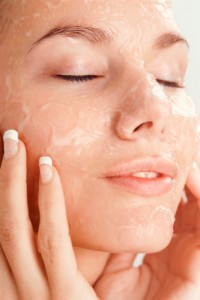Some of the oldest procedures in the world are cosmetic chemical peels. Ancient Egyptians, Romans and Greeks all used these procedures to achieve beautiful skin. Lactic acid, which is an acid, found in milk, was the first chemical exfoliate used.
Chemical peels are treatments used to remove dead skin and produce a smoother skin surface. Even though the word “peel” is used in these treatments nothing is peeled off during a procedure. The chemical solution dissolves the top layer of the skin. As this layer dissolves, new tissue is formed as the body naturally heals itself.
Peels use acid which causes the protein that holds the skin cells together to loosen. There are different types of chemical acid peels. These can include Phenol, trichloroacetic acid (TCA) and alphahydroxy acids (AHAs). The type of acid used is determined according to the individual patient’s needs and wishes.
Lightest Peel
The lightest of the peels are those that include Alphahydroxy acids (AHAs). These are made up of lactic or fruit acids. Treatment of fine lines, skin dryness and uneven skin tone is the main use for these types of acid peels. Lotions and crams that can be used daily are may contain AHA acids. AHA peels are done about every three months as the results are less dramatic at first and at times six procedures are needed to reach the desired results.
Medium Peels
The medium peels contain Trichloroacetic acid (TCA). Stretch marks and mild acne scars are best treated by a TCA chemical peel. It can also remove mild acne. More than one TCA peel may preformed as these peels are also less dramatic.
Strongest Peels
The strongest acid is Phenol and a deep peel is the result of using this acid. Course wrinkles, sun damaged skin and non-cancerous growths are most often benefited by these types of peels. This procedure is done on the face only since it can cause scarring on other parts of the body.
The medium and deep peels (TCA and Phenol) are the best treatment for acne scars since they affect the deeper skin layers.

